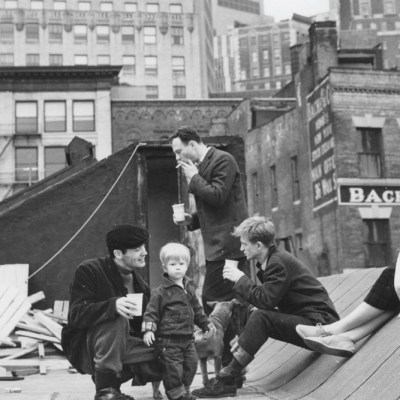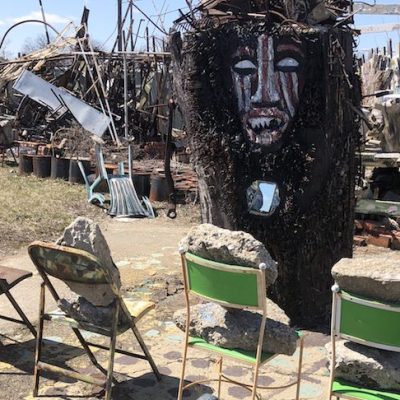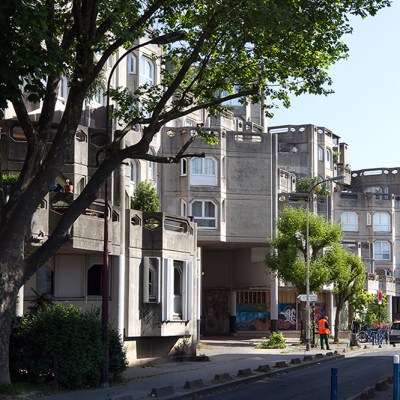It may be hard to imagine today, but New York City was once one of the world’s largest manufacturing hubs. From the 1890s to the 1950s, long before the Prada stores and expensive coffee, lower Manhattan was mostly factories and foundries. Only when globalisation began to push production abroad in the 1960s and ’70s did artists in search of cheap rent move into neighbourhoods such as SoHo and the Bowery, illicitly occupying abandoned factories and turning them into live-work studios.
Documentarian and photographer Joshua Charow came upon these apartments in a similarly clandestine fashion. As an adolescent, Charow dabbled in ‘urban exploration’, illegally sneaking into and exploring buildings. After peering into enough windows that looked like they should belong to factories, but finding artists instead, he learned about the ‘Loft Law’, passed in 1982 to protect artists still living in these factories-turned-lofts from rising rents and eviction.
Curtis Mitchell’s live-work studio in a former ice cream factory in Brooklyn. Photo: © Joshua Charow; courtesy Joshua Charow and Westwood Gallery NYC
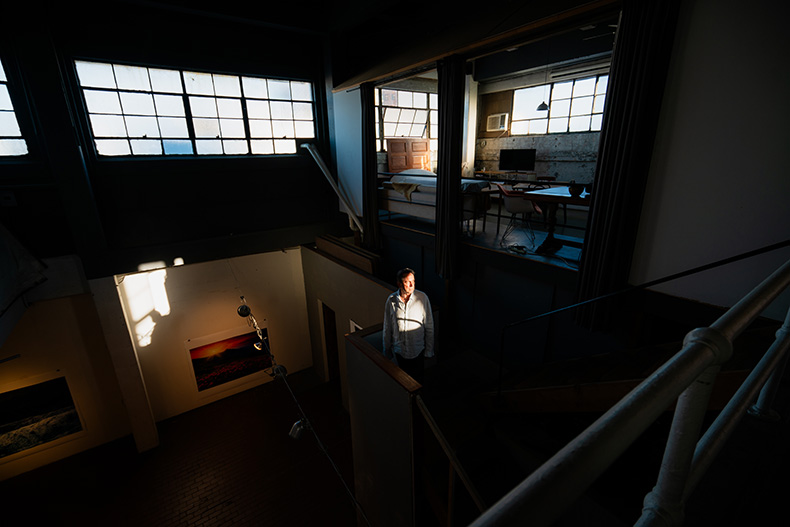
After obtaining a government-issued list of every remaining protected apartment, Charow spent three years visiting each one and photographed dozens of their inhabitants. The project turned into a book, called Loft Law (published by Damiani), and an exhibition of the same name curated by James Cavello at New York’s Westwood Gallery, which primarily represents artists from the sorts of neighbourhoods where most lofters lived. It has also become a viral internet phenomenon via Charow’s interviews with the artists on YouTube and Instagram, where you can hear them speak about the ancient times of affordable rent.
Charow’s photographs often take a wide-angle view of these spaces with their inhabitants seated in the centre. Aside from the baseline construction – tall ceilings, massive central spaces, support columns and wooden floors – the lofts are all built and inhabited differently. Some are wide open; others are crowded with canvases so precariously stacked that one wrong turn could bring them all down.
Although nothing in the 1982 law requires tenants to be artists (Charow’s subjects include experimental film-makers, musicians, set designers, lawyers and socialites), loft spaces appealed to artists in particular because of their size and adaptability. Since these buildings were zoned for industry, they came without the typical trappings of liveable spaces – no kitchens, bathrooms, heating or plumbing. Artists built all the amenities themselves, at their own expense and their own risk. (The book includes more than one story of a fire burning down a loft.)
Ellen Christine, who has lived in Hudson Square since 1985. Photo: © Joshua Charow; courtesy Joshua Charow and Westwood Gallery NYC
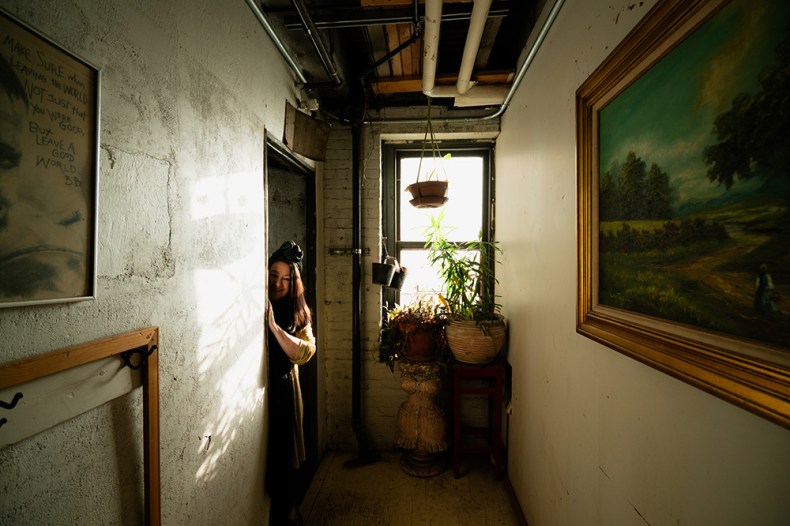
The spaces are direct extensions of the creative practices of the people who live in them. Steve Silver painted his floors with rainbow grid patterns resembling his paintings and sculptures of the same style, some of which are displayed alongside Charow’s photos at Westwood Gallery. Gilda Pervin’s walls are covered in tangled wire sculptures, which very well could have been inspired by the process of tearing down drywall and installing electrical filament. The lofts allowed artists to remain immersed in their work, with the spaces often inspiring the art and vice versa.
As the artists who are still around tell it to Charow, opportunities seemed to fall from the sky. Ninety-seven-year-old Carmen Cicero says he once asked a bystander to help him carry a painting upstairs. The bystander turned out to be the director of the Guggenheim Museum and the painting wound up in the museum’s first exhibition in its Frank Lloyd Wright building. Cicero’s work is now in the permanent collections of the Whitney, MoMA and the Smithsonian, among other institutions.
Carmen Cicero, who has lived in the Bowery since 1971. Photo: © Joshua Charow; courtesy Joshua Charow and Westwood Gallery NYC
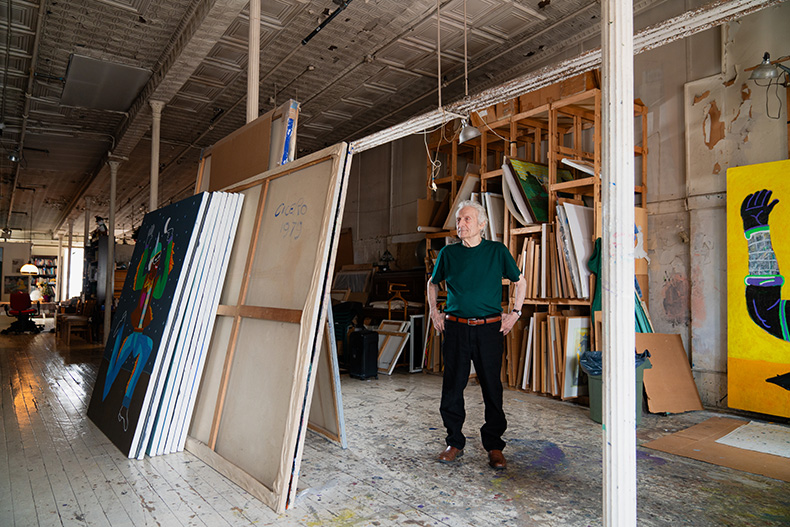
Only a few hundred tenants remain under the protection of the Loft Law. Most are in their 90s and have experienced the gentrification of New York around them, sometimes directly under their feet. Joe Haske, for example, lives in a loft in Hudson Square – a neighbourhood that used to reek of dead fish and now boasts the most expensive rented apartment in New York City ($125,000 per month). Artists’ lofts, which were originally carved out of industrial spaces out of necessity, have become a hot aesthetic for contemporary interior designers.
The Loft Law allowed a lucky few to survive social changes that would soon make their lifestyles obsolete. Indeed, most of Charow’s subjects say that they would not be able to stay in New York without the law’s protection. Those that remain feel estranged from the city as it is now. As pencil factories were replaced with pencil pushers, bohemians have become an endangered species. As the experimental film-makers Carolyn Oberst and Jeff Way say, ‘We’re living in another parallel universe.’
Loft Law: The Last of New York City’s Original Artist Lofts by Joshua Charow is published by Damiani. An exhibition of Joshua Charow’s photographs is at Westwood Gallery until 13 July.

